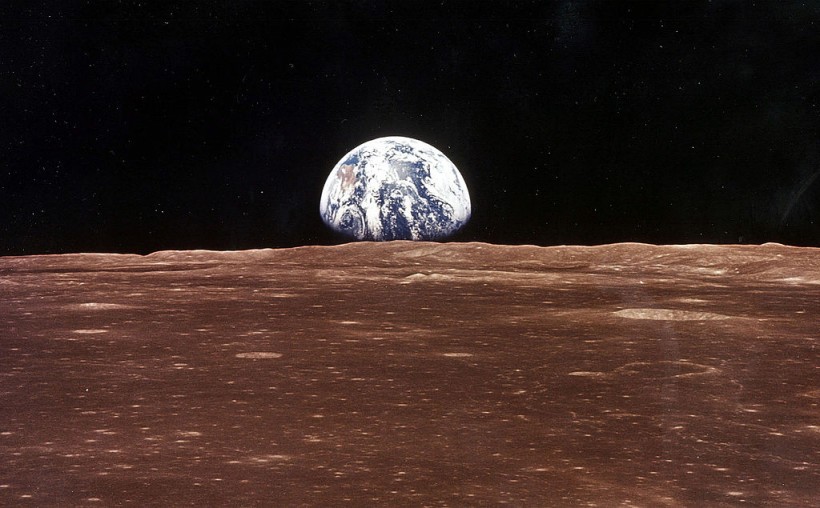A recent space observation discovered that a space rock is heading towards Earth, reaching the planet by 2023. The asteroid was first identified by experts from Arizona's Mount Lemmon Observatory.
Asteroid 2022 AE1 Discovered Headed to Earth

376713 11: (FILE PHOTO) A view of the Earth appears over the Lunar horizon as the Apollo 11 Command Module comes into view of the Moon before Astronatus Neil Armstrong and Edwin Aldrin Jr. leave in the Lunar Module, Eagle, to become the first men to walk on the Moon's surface. The 30th anniversary of the Apollo 11 Moon mission is celebrated on July 20, 1999.
The asteroid, dubbed as '2022 AE1,' has a size of 70 meters or about 230 feet in diameter. Based on its trajectory, the astronomers estimated that the space rock might hit our planet in July 2023.
The initial observations carried out by Mount Lemmon Observatory were followed up by additional computations since the first hours of an asteroid's discovery commonly present uncertainties. These supporting observations could also specify potential obstacles that the object may hit.
The first week of the observation revealed that 2022 AE1 hitting Earth quite increased. Following the studies, the asteroid was listed by the Asteroid Orbit Determination (AstOD) as a potential future impact.
The highest rankings of the Palermo Scale were also relayed to the 2022 AE1 asteroid. This measurement system is utilized to categorize and elaborate the impact risks of certain space rocks.
The concern was brought to both NASA and ESA, which pushed them to publish the potential event at their respective Near-Earth Object (NEO) portals. This allowed experts to examine the upcoming event.
The observation was delayed as the full moon blocked the skies one week after the initial investigation. Fortunately, the next computations revealed that the chances of the asteroid 2022 AE1 slamming our planet decreased.
With the findings gathered from the space rock's continuous tracking, it can be assured that the asteroid will not land on Earth.
ESA Near-Earth Object Coordination Center (NEOCC) astronomy specialist Marco Micheli said that in his decade-long career at the space agency, they have never encountered an object as risky as the 2022 AE1.
ALSO READ: What Happened To The Chinese Rocket That Crashed Into The Moon? [LOOK]
Asteroid Will Not Slam to Earth in 2023
Some challenges and thrills sprouted during their observations, but the efforts resulted in substantial data that the space rock's trajectory will not come towards us, Micheli continued.
Micheli explained that the first asteroid observation identifies the unknown cosmic object without having a clear picture of what it actually is and what course it will run through.
The second observation is necessary for the astronomers to understand the rock better when in motion. A third observation is required to determine the potential direction of the object and its displacement aspects, such as speed.
Additional observations are then carried out to refine the orbit more. In this way, the uncertainties from an asteroid's first discovery will be eliminated, allowing astronomers to exact the path of the object.
The studies surrounding space rocks are commonly run through a large series of computer simulations that automatically calculates the likelihood of the object striking other bodies—repeating the process and recalculating data drops down the risk percentage of an impact.
Just a few hours after the confirmation of ESA, NEOCC dynamic specialist Laura Faggiolo said that their counterparts at NASA confirmed the same results. Their collective findings conclude that the 2022 AE1 will not inflict any impact on our planet.
For now, the asteroid 2022 AE1 will be monitored continuously. The projections show that by July 2023, the space rock will fly by at ten million kilometers away from us, which can be compared to over 20 times the moon's distance from Earth, reports Science Alert.
RELATED ARTICLE: NASA Begins Construction of Europa Clipper, Launch in 2024 by SpaceX
Check out more news and information on Space in Science Times.














